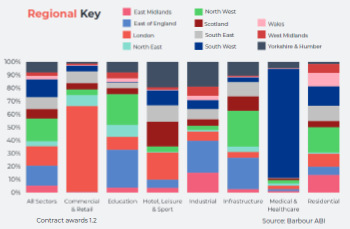Delay damages
NEC was first published in 1993 as the New Engineering Contract. It is a suite of construction contracts intended to promote partnering and collaboration between the contractor and client. The third edition NEC3 was published in 2005.
The term ‘delay damages’ refers to one of the 15 secondary options available as part of NEC3. ‘X7 – Delay damages (liquidated damages)’ can be selected in part 1 of the contract data, and the level of damages payable can be defined. If option X7 is selected, and the contractor does not achieve the completion date then delay damages will be due from the contractor. This is similar to liquidated damages (or liquidated and ascertained damages, sometimes referred to as LADs) in other forms of contract such as JCT contracts.
NEC guidance recommends that this option is included in most contracts. It is also recommended that the employer maintains a record of how delay damages are calculated in case they are challenged by the contractor. Delay damages are not a penalty, they must be based on a genuine calculation of damages. If they are not genuine, they may be considered a penalty by the courts and so will be unenforceable. Under these circumstances, the client would still be able to pursue a claim for breach of contract.
A contractor wishing to avoid a claim against them for delay damages, may make a delay claim, demonstrating that:
- A compensation event has occurred.
- The event caused a delay to the project’s completion.
Compensation events are similar to relevant events and relevant matters referred to in other forms of contract such as JCT contracts. Very broadly, compensation events tend to be those events that impact on the completion date, but are not the contractor’s fault. This might include events that are caused by the client, or neutral events such as exceptionally adverse weather.
A delay claim for a compensation event can only be made by the contractor if the event actually delays completion. This can require careful analysis where there are multiple possible causes of a delay to ascertain the impact of the compensation event itself.
Generally, there are two approaches that can be adopted for this sort of analysis:
- Prospective: An assessment at the time the event occurs.
- Retrospective: An assessment after the event has occurred.
Whilst there is no express guidance given in NEC3 as to which of the two methods to use, it is thought that the intention of NEC3 to solve problems as they occur, preferably before completion, makes the prospective approach more favourable. Although there remains a risk that this may result in the contractor being under or over-compensated.
However, courts may prefer the retrospective approach, as it can otherwise be difficult to establish a causal connection between the compensation event and the delay, and it also allows for the benefit of hindsight.
There is provision in clause X7.3 for a delay damages reduction in the event that the employer takes control of a part of the works prior to the completion.
[edit] Related articles on Designing Buildings Wiki
- Accepted programme.
- Articles of agreement.
- Compensation event.
- Contract conditions.
- Contractual chain.
- Contractual obligation.
- Cost reimbursable contract.
- Defects.
- Defined cost.
- Disallowed cost.
- Early warning notice.
- Extension of time.
- Key dates.
- Latham Report.
- Liquidated damages.
- NEC3.
- NEC contract change management systems.
- NEC early contractor involvement.
- Penalty.
- Period for reply.
- Procurement route.
- Time Risk Allowance TRA.
- Variations.
- Z clauses.
[edit] External references
- RICS Consultations - Delay damages
- RPC - Delay claims under NEC3
Featured articles and news
The Planning and Infrastructure bill oulined
With reactions from IHBC and others on its potential impacts.
Farnborough College Unveils its Half-house for Sustainable Construction Training.
Spring Statement 2025 with reactions from industry
Confirming previously announced funding, and welfare changes amid adjusted growth forecast.
Scottish Government responds to Grenfell report
As fund for unsafe cladding assessments is launched.
CLC and BSR process map for HRB approvals
One of the initial outputs of their weekly BSR meetings.
Architects Academy at an insulation manufacturing facility
Programme of technical engagement for aspiring designers.
Building Safety Levy technical consultation response
Details of the planned levy now due in 2026.
Great British Energy install solar on school and NHS sites
200 schools and 200 NHS sites to get solar systems, as first project of the newly formed government initiative.
600 million for 60,000 more skilled construction workers
Announced by Treasury ahead of the Spring Statement.
The restoration of the novelist’s birthplace in Eastwood.
Life Critical Fire Safety External Wall System LCFS EWS
Breaking down what is meant by this now often used term.
PAC report on the Remediation of Dangerous Cladding
Recommendations on workforce, transparency, support, insurance, funding, fraud and mismanagement.
New towns, expanded settlements and housing delivery
Modular inquiry asks if new towns and expanded settlements are an effective means of delivering housing.
Building Engineering Business Survey Q1 2025
Survey shows growth remains flat as skill shortages and volatile pricing persist.
Construction contract awards remain buoyant
Infrastructure up but residential struggles.
Warm Homes Plan and existing energy bill support policies
Breaking down what existing policies are and what they do.
A dynamic brand built for impact stitched into BSRIA’s building fabric.























